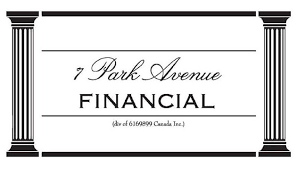|
5 Revolutionary Breakthroughs In Working Capital Business Loans & Cash Flow Canada!
Working Capital Loans: The Cash Flow Solution Every Canadian Business Needs
You Are Looking for Working Capital and Cash Flow Solutions!
You've arrived at the right address! Welcome to 7 Park Avenue Financial
UPDATED 08/25/2025
Financing & Cash flow are the biggest issues facing business today
Unaware / Dissatisfied with your financing options?
CONTACT US : OUR EXPERTISE / YOUR RESULTS
Call Now! - Direct Line - 416 319 5769 - Let's talk or arrange a meeting to discuss your needs
Email - sprokop@7parkavenuefinancial.com

Working Capital Business Loans: Innovative Perspectives
The Cash Flow Crisis That's Strangling Canadian Businesses
Your business is profitable on paper, but your bank account tells a different story.
Outstanding invoices pile up while bills demand immediate payment. This cash flow stranglehold forces difficult choices: delay supplier payments, skip growth opportunities, or even miss payroll.
Let the 7 Park Avenue Financial team show you how Working capital business loans break this cycle, providing immediate liquidity to bridge the gap between receivables and operational demands.
Mission Impossible? Rethinking Working Capital Loans and Cash Flow Solutions in Canada
Can we reprogram your business mindset? Let’s explore innovative ways Canadian companies can use working capital loans and cash flow financing. Sometimes it’s a loan solution—sometimes it isn’t.
The Revolutionary Nature of Liquidity Solutions
Is “revolutionary” too bold? We’ll let you decide. What’s certain is that fresh approaches to working capital and cash flow are changing the game.
The Liquidity Gap in Canadian Business
Business owners often hear the term liquidity gap. It refers to the financing challenge faced by many Canadian small and medium-sized enterprises. Most often, the gap comes from funds tied up in receivables and inventory.
The Struggles with Traditional Financing
Traditional financing options are harder to access today. When they are available, they often don’t fit the borrower’s needs. Facility size, collateral requirements, and guarantees are frequent obstacles.
The Canadian Banking Conundrum
Canadian banks are admired worldwide. But many owners wonder why they can’t secure business financing through a standard loan. The answer is simple: banks safeguard depositor funds, not venture capital.
When you deposit money, the bank must keep it liquid. That’s why banks limit lending to small and mid-sized businesses. In short—you gave them savings, not equity.
Bank Offerings for Working Capital
Canadian chartered banks do provide working capital loans. But approval requires strong financial statements and additional collateral. Repayment certainty is critical.
Exploring Revolutionary Working Capital Solutions
Not every solution is a loan. Some of the most effective cash flow tools are alternative financing strategies. They can deliver working capital quickly, often without the hurdles of traditional lending.
Innovative Cash Flow Solutions
Five powerful alternatives to consider include:
Overview of the 5 Innovative Solutions
Purchase order financing pays your supplier directly, ensuring you can fulfill customer demand.
Asset-based lines of credit leverage the real-time value of your receivables and inventory.
Short-term working capital loans and merchant cash advances give immediate funds, repaid through future sales.
Confidential receivable financing provides same-day cash flow, while you retain full control of billing and collections.
SR&ED tax credit loans let you monetize research and development claims before government refunds arrive.
Case Study
Company: Toronto-based custom furniture manufacturer
Challenge: Company secured a $150,000 contract but needed to purchase specialized wood and hire temporary workers upfront, while payment wouldn't arrive for 60 days, creating a dangerous cash flow gap.
Solution: 7 Park Avenue Financial originated a $75,000 working capital loan with flexible daily repayments aligned with the company's cash flow, enabling them to fulfill the contract without compromising other operations.
Results:
Maple Manufacturing completed the project on time, earned $45,000 profit, strengthened their supplier relationships with prompt payments, and used the success to secure three additional large contracts worth $400,000 total.
Key Takeaways
-
Definition of working capital: The difference between current assets (cash, receivables, inventory) and current liabilities (payables). It represents funds for daily operations.
-
Purpose of working capital loans: Short-term financing for everyday needs like payroll and inventory, not long-term investments.
-
Liquidity gap: Timing mismatches between income and expenses, often due to receivables and inventory. Loans bridge these gaps.
-
Types of solutions: Asset-based lines, purchase order financing, merchant cash advances, receivable financing, and tax credit monetization.
-
Traditional vs. innovative financing: Banks require collateral and strict approvals. Alternative financing offers speed, flexibility, and tailored options.
Conclusion
Searching for the best working capital loan or business financing in Canada? The right solution can unlock cash flow and strengthen growth.
Contact 7 Park Avenue Financial—trusted, credible, and experienced in working capital financing for Canadian businesses.
FAQ
What differentiates traditional financing from innovative capital solutions?
Traditional financing is stricter, slower, and collateral-driven. Innovative options are flexible, faster, and designed for modern business needs.
How do asset-based credit lines and confidential receivable financing differ?
Asset-based lines are tied to the value of receivables and inventory. Confidential receivable financing provides immediate cash while you keep control of collections.
Why does the liquidity gap challenge Canadian businesses?
Receivables and inventory tie up capital. Traditional financing is limited, and SMEs may lack the financial statements or credit banks require.
What are strategies for efficient working capital management?
Manage inventory levels, speed up receivables, delay payables when possible, forecast cash flow, and plan contingencies. Review overheads and negotiate better vendor terms.
What are the risks and benefits of working capital loans?
Benefits: Flexibility, fast funding, operational continuity, no equity dilution.
Risks: Higher rates, potential over-reliance, collateral requirements, and risk of poor financial practices.
What is the difference between short-term and long-term business financing?
Short-term: Up to one year, used for operations, faster to obtain, often higher rates.
Long-term: Over one year, used for assets or expansion, lower rates, stricter approvals.
What types of businesses qualify for working capital business loans? Working capital financing is available to most established businesses with consistent revenue streams, including retail operations, service providers, manufacturers, and seasonal businesses that demonstrate the ability to repay based on their operational cash flow patterns.
How quickly can I access working capital loan funds? Working capital loans typically provide funding within 24-48 hours for approved applications, making them ideal for time-sensitive opportunities or urgent operational needs that cannot wait for traditional bank approval processes.
What documentation is required for working capital loan applications? Working capital loan applications generally require recent bank statements, profit and loss statements, accounts receivable aging reports, and basic business information, with most lenders streamlining the process to minimize paperwork burdens.
How do working capital loans differ from traditional term loans? Working capital loans focus on your business's cash flow and daily operations rather than requiring extensive collateral, offering more flexible repayment structures aligned with your revenue cycles and business seasonality patterns.
What are the typical interest rates and fees for working capital financing? Working capital loan rates vary based on your business strength and loan structure, typically ranging from competitive bank rates for strong borrowers to higher rates for businesses with credit challenges, but often proving cost-effective when considering the opportunity cost of missed business.
Who provides working capital business loans in Canada? Working capital business loans are offered by traditional banks, alternative lenders, online financing platforms, and specialized commercial finance companies, each providing different advantages based on your business profile and funding timeline needs.
What determines working capital loan approval? Working capital loan approval depends primarily on your business cash flow, banking history, time in business, and overall financial health rather than personal credit scores alone, making these loans accessible to businesses with strong operations.
When should businesses consider working capital financing? Working capital financing makes sense when facing seasonal cash flow gaps, pursuing growth opportunities, managing large orders, covering unexpected expenses, or needing to bridge the gap between invoice generation and customer payment.
Where can Canadian businesses find the best working capital loan rates? Working capital loan rates are most competitive through established business relationships with banks, alternative lenders specializing in commercial finance, and brokers who can compare multiple options to find optimal terms.
Why do profitable businesses need working capital loans? Working capital loans help profitable businesses because paper profits don't pay bills – they bridge the timing gap between earning revenue and collecting payment, enabling continuous operations without cash flow interruptions.
How much working capital can businesses borrow? Working capital loan amounts typically range from $10,000 to $2 million or more, based on your monthly revenue, existing cash flow, and the lender's assessment of your repayment capacity through normal business operations.
Which industries benefit most from working capital financing? Working capital financing particularly benefits seasonal businesses, contractors, retailers, importers, manufacturers, and service providers who experience predictable cash flow cycles or need to maintain inventory levels ahead of sales.
How does working capital loan repayment work? Working capital loan repayment structures vary from daily or weekly automatic payments based on bank deposits to monthly payments, with many lenders offering flexible terms that align with your business's natural cash flow patterns.
What credit requirements apply to working capital loans? Working capital loans often have more flexible credit requirements than traditional loans, focusing on business performance metrics, cash flow strength, and operational history rather than solely on personal credit scores.
Statistics on Working Capital Business Loans
- 82% of small business failures are attributed to cash flow problems and poor cash flow management
- Businesses typically wait 30-90 days for customer payments while expenses remain immediate
- Working capital financing can improve business survival rates by 40% during economic downturns
- Companies using working capital loans report 25% faster growth than those relying solely on internal cash flow
- The average working capital loan is repaid within 6-18 months
- 67% of businesses report improved supplier relationships after implementing working capital financing
Citations
- Small Business Administration. "Small Business Credit Survey: Report on Employer Firms." Federal Reserve Banks, 2023. https://www.fedsmallbusiness.org
- Bank of Canada. "Business Outlook Survey: Winter 2023-24." Bank of Canada Publications, 2024. https://www.bankofcanada.ca
- Canadian Federation of Independent Business. "Business Barometer: Cash Flow Challenges." CFIB Research, 2023. https://www.cfib-fcei.ca
- Statistics Canada. "Quarterly Financial Statistics for Enterprises." Government of Canada, 2023. https://www.statcan.gc.ca
- Export Development Canada. "Trade Financing and Working Capital Solutions." EDC Publications, 2023. https://www.edc.ca
- 7 Park Avenue Financial ." Working Capital Business Cash Flow Solutions".https://www.7parkavenuefinancial.com/business-credit-working-capital.html

' Canadian Business Financing With The Intelligent Use Of Experience '
STAN PROKOP
7 Park Avenue Financial/Copyright/2025

ABOUT THE AUTHOR: Stan Prokop is the founder of 7 Park Avenue Financial and a recognized expert on Canadian Business Financing. Since 2004 Stan has helped hundreds of small, medium and large organizations achieve the financing they need to survive and grow. He has decades of credit and lending experience working for firms such as Hewlett Packard / Cable & Wireless / Ashland Oil
|